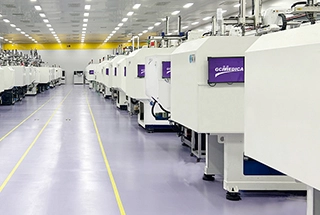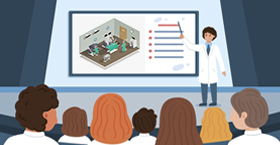Enteral feeding encompasses a broad range of techniques for delivering nutrients directly into the gastrointestinal tract, of which nasogastric (NG) tubes represent one widely used method. While both approaches share the fundamental goal of maintaining or restoring nutritional status when oral intake is inadequate, they differ markedly in placement, duration of use, patient comfort, and risk profile.
A nasogastric tube is a thin, flexible catheter inserted through the nostril and advanced into the stomach. It is ideally suited for short-term feeding (usually less than four to six weeks) and allows for gastric decompression or medication delivery without the need for surgery. Placement is performed at the bedside, often using pH testing or X-ray confirmation, and removal is straightforward. However, NG tubes can cause nasal irritation, sinusitis, and discomfort, and they carry a risk of accidental dislodgement or aspiration if mispositioned.
By contrast, more permanent enteral feeding tubes—such as percutaneous endoscopic gastrostomy (PEG) or jejunostomy (PEJ)—are placed through the abdominal wall under endoscopic or radiologic guidance. These tubes facilitate long-term nutritional support (months to years), bypass upper-GI dysfunction, and improve patient comfort by eliminating the nasal component. They also permit larger bore tubing for more viscous feeds and medications. The downside includes the need for a minor invasive procedure, potential for site infection or buried bumper syndrome, and greater initial cost and logistical planning.
Below is a summary comparison:
| Feature | Nasogastric Tube (NG) | Long-Term Enteral Tube (PEG/PEJ) |
|---|---|---|
| Insertion | Bedside, nasal passage to stomach | Endoscopic or radiologic placement through abdominal wall |
| Typical Duration | Short-term (<4–6 weeks) | Long-term (months to years) |
| Patient Comfort | Nasal irritation, risk of sinusitis, visible tubing | More discreet, no nasal component, better tolerated |
| Nutrient & Medication Flow | Smaller bore; limited viscosity | Larger bore; supports thicker formulas and bolus feeds |
| Risks | Aspiration, tube dislodgement, nasal/sinus complications | Site infection, leakage, buried bumper, procedural risks |
| Cost & Logistics | Low cost, minimal prep | Higher cost, requires scheduling and specialist support |
When choosing between NG tubes and more permanent enteral access, clinicians must balance urgency of nutritional need, anticipated duration of support, patient anatomy and tolerance, as well as resource availability. Proper tube selection, placement technique, and ongoing care are essential to optimize nutritional outcomes and minimize complications.
Related products
- Polyurethane Nasogastric Feeding Tubes
- Polyurethane Y-Port Nasogastric Feeding Tubes


 Français
Français Español
Español Products
Products

 About Us
About Us











